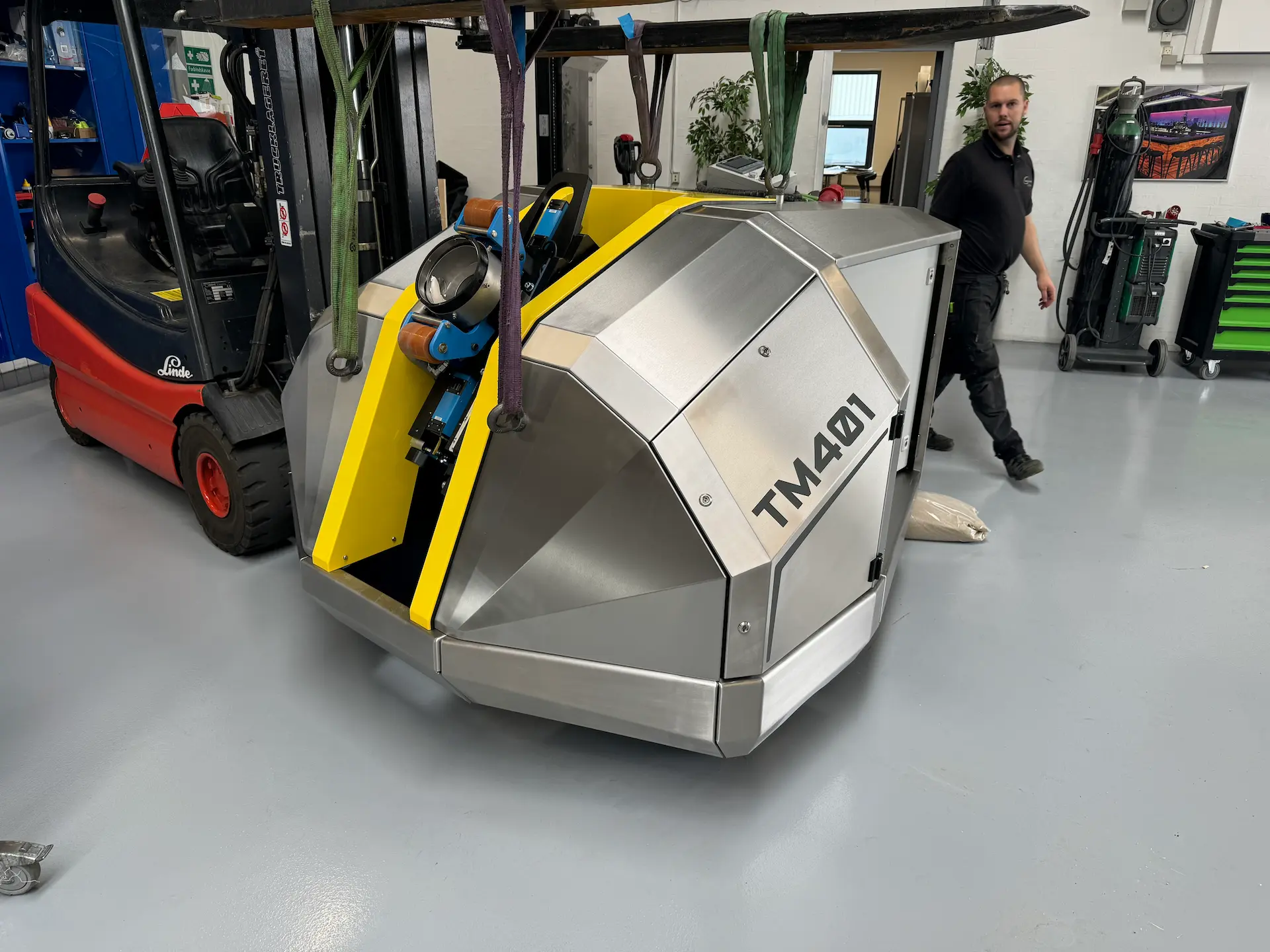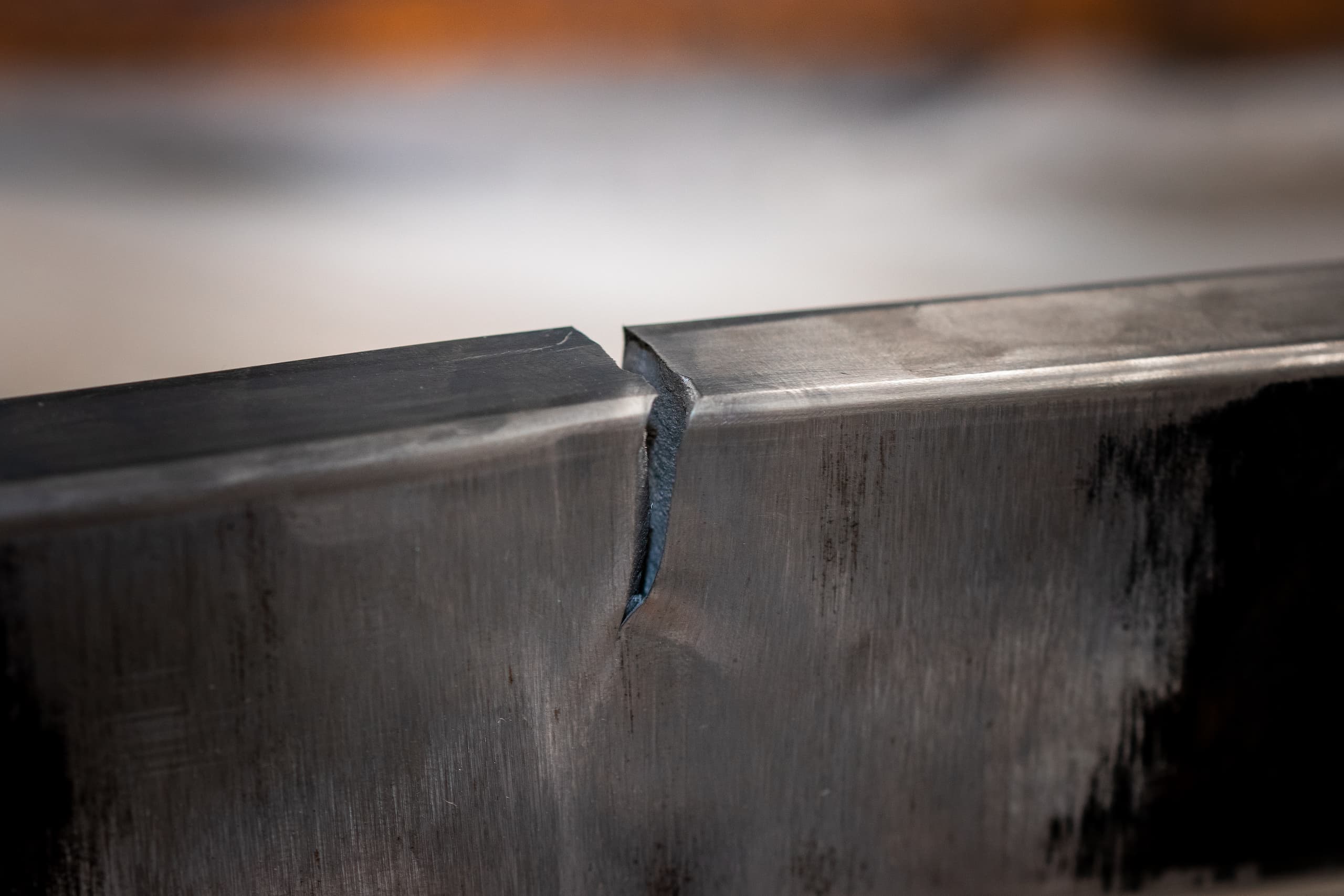Research says 'yes' to replacing weld grinding with machining
Together with RTOs FORCE Technology and Danish Technological Institute, and under a demonstration project grant awarded by Manufacturing Academy of Denmark (MADE), we undertook to demonstrate that our MAX TM401 mobile CNC-robot will deliver high-rate, low-cost and repeatable-quality fatigue strength improvement in wind turbine support structures without introducing or compounding weld defects.
8 dog-bone samples of a double-V butt weld joint in a 25 mm S355 steel plate were subjected to manual belt grinding and automated machining to different geometries and finish.
Laboratory testing at Force Technology and Danish Technological Institute facilities of roughness average (Ra), hardness, microstructure and residual stress was conducted on each sample using X-Y direction measurement, HV-measurements, SEM-microscope, and X-ray diffraction using the BCC 211 peak and Cr-anode.
The microstructural analysis part of the project revealed no differences in material properties between grinded and machined weld specimens. Results from the hardness analysis part showed similar hardness profiles for all specimens.
Both the machining process and the grinding process achieved roughness average (Ra) results below that of 3.2 µm recommended by DNV-RP-C203.
The residual stress analysis of the top 2-5 µm of the weld revealed an increase in tensile residual stress, while the grinding process results in a lower tensile stress state.
No difference in residual stress profile between the grinded and machined sample could be measured after sandblasting.


